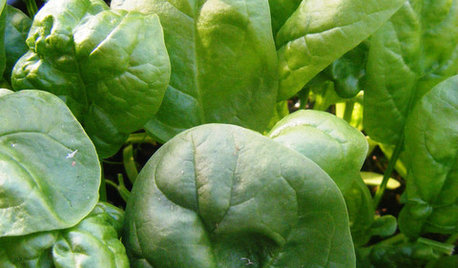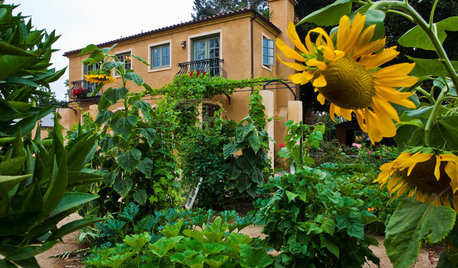Discolored seedling leaves, lighting or nutrient?
NoSupplies
18 years ago
Related Stories

GARDENING GUIDESSeeds or Seedlings? How to Get Your Garden Started
Growing delicious herbs and vegetables starts with knowing your goals and when you want to plant
Full Story
FALL GARDENING5 Ways to Put Fall Leaves to Work in Your Garden
Improve your soil and yard the organic way with a valuable garden booster that grows on trees
Full Story
COOL-SEASON CROPSCool-Season Vegetables: How to Grow Spinach
Chock-full of antioxidants and iron, spinach is a nutrient-rich addition to your fall or spring garden
Full Story
FARM YOUR YARDHow to Get Good Soil for Your Edible Garden
The nutrients in your soil feed the plants that feed you. Here are tips on getting it right — just in time for planting season
Full Story
EDIBLE GARDENSSummer Crops: How to Grow Tomatoes
Plant tomato seedlings in spring for one of the best tastes of summer, fresh from your backyard
Full Story
FALL GARDENING6 Trees You'll Fall For
Don’t put down that spade! Autumn is the perfect time for planting these trees
Full Story
REGIONAL GARDEN GUIDESTexas Gardener's April Checklist
Get your sowing and planting on — spring brings a tantalizing array of possibilities in the garden
Full Story
GARDENING GUIDES5 Ways to Naturally Win the Weed War
Show irksome weeds no mercy with these tricks for combating them sans chemicals
Full Story
FALL GARDENING7 Reasons Not to Clean Up Your Fall Garden
Before you pluck and rake, consider wildlife, the health of your plants and your own right to relax
Full Story
GARDENING GUIDESNew Ways to Think About All That Mulch in the Garden
Before you go making a mountain out of a mulch hill, learn the facts about what your plants and soil really want
Full Story





The_Grub
NoSuppliesOriginal Author
Related Professionals
Sand Springs Landscape Architects & Landscape Designers · Springfield Landscape Contractors · Centereach Landscape Contractors · Cicero Landscape Contractors · Fort Mill Landscape Contractors · Kahului Landscape Contractors · Lakeville Landscape Contractors · New Braunfels Landscape Contractors · North Lauderdale Landscape Contractors · North Plainfield Landscape Contractors · Seymour Landscape Contractors · Stony Brook Landscape Contractors · Vacaville Landscape Contractors · Littleton Siding & Exteriors · Woodbridge Siding & ExteriorsThe_Grub
NoSuppliesOriginal Author